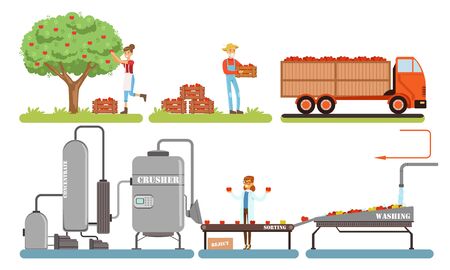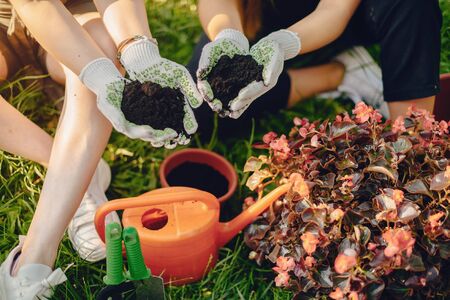1. Understanding Drought-Tolerant Landscaping
Drought-tolerant landscaping, also known as xeriscaping, is a smart and sustainable way to design your yard—especially if you live in a dry or arid region of the U.S. This approach focuses on using plants and materials that require minimal water, making it perfect for homeowners looking to cut back on water usage while keeping their outdoor spaces beautiful and low-maintenance.
Why Choose Drought-Tolerant Landscaping?
With growing concerns about water conservation and climate change, more Americans are turning to drought-tolerant landscaping as a practical solution. It not only helps reduce your water bill but also supports environmental sustainability by minimizing the need for irrigation, fertilizers, and pesticides.
Key Benefits
| Benefit | Description |
|---|---|
| Water Conservation | Uses up to 60% less water than traditional landscaping. |
| Low Maintenance | Reduces time spent on mowing, watering, and upkeep. |
| Cost Savings | Lowers water bills and maintenance costs over time. |
| Sustainable Design | Promotes local ecosystems and reduces chemical use. |
| Curb Appeal | Stylish plant choices and layouts enhance home value. |
Best Fit for Dry Climate Zones
This type of landscaping is especially ideal for regions like the Southwest, including states like Arizona, New Mexico, Nevada, Texas, and parts of California. These areas often face water restrictions and extreme heat, making drought-resistant solutions not just helpful—but essential.
Examples of Dry Climate Zones in the U.S.
- Southwest: Arizona, New Mexico, Nevada
- West Coast: Southern California
- Mountain States: Utah, Colorado (lower elevations)
- Texas: Especially Central and West Texas regions
The Bottom Line
Drought-tolerant landscaping isn’t just about saving water—it’s about creating a beautiful outdoor space that works with nature instead of against it. Whether youre dealing with frequent droughts or simply want a low-effort yard that still looks great year-round, this landscaping style offers smart solutions that are both stylish and sustainable.
2. Design Principles for a Low-Water Yard
Creating a drought-tolerant yard doesn’t mean sacrificing style or curb appeal. With smart planning and the right design strategies, you can build a beautiful landscape that thrives with minimal water. Below are some key principles to guide your low-water landscaping project.
Xeriscaping: A Water-Wise Foundation
Xeriscaping is a landscaping method developed specifically for dry climates like those found in many parts of the U.S., especially the Southwest. It focuses on selecting native or drought-resistant plants, reducing turf areas, and improving soil health to reduce water use.
- Choose native plants: These are adapted to your local climate and require less water and maintenance.
- Limit lawn space: Grass lawns are water hogs. Replace them with ground covers or gravel.
- Group plants by water needs: This helps avoid overwatering low-need areas while ensuring thirsty plants get what they need.
Zoning by Water Needs
Dividing your yard into hydrozones—or zones based on plant watering requirements—is an effective way to save water. This lets you apply the right amount of water to each area without waste.
| Zone Type | Watering Frequency | Recommended Plants |
|---|---|---|
| Low-Water Zone | Occasional deep watering | Succulents, lavender, ornamental grasses |
| Moderate-Water Zone | Weekly watering | Sage, rosemary, certain shrubs |
| High-Water Zone | Frequent watering (use sparingly) | Lawn patches, vegetable garden beds |
Hardscaping for Function and Style
Hardscaping refers to non-plant features in your yard—like patios, walkways, and decorative stones—that add structure and beauty while reducing the space that requires irrigation.
- Pavers and gravel: Great for walkways or patios, these materials allow rainwater to filter into the soil while keeping things low-maintenance.
- Boulders and rock gardens: Add visual interest and serve as natural accents in a xeriscape design.
- Raised beds: Make it easier to control soil conditions and limit water usage.
The Power of Mulch
A thick layer of mulch around your plants helps keep moisture in the soil, reduces evaporation, and prevents weeds from competing for water. Organic mulches like bark chips or shredded leaves also improve soil health as they decompose.
Benefits of Using Mulch:
- Keeps roots cool during hot weather
- Lowers the frequency of watering needed
- Adds nutrients back into the soil naturally
- Makes your yard look neat and finished
Tip:
Aim for a mulch layer about 2–3 inches thick, but keep it a few inches away from plant stems to avoid rot.
By applying these design strategies thoughtfully, you’ll create a stylish outdoor space thats both sustainable and easy to maintain—even in the driest conditions.

3. Best Drought-Tolerant Plants for American Gardens
Creating a drought-tolerant landscape doesnt mean you have to sacrifice beauty or variety. Across the U.S., there are plenty of native and low-water plants that thrive with minimal care. Whether youre in the arid Southwest, the humid Southeast, or anywhere in between, theres a plant perfect for your yard.
🌵 Succulents and Cacti
Succulents are a go-to choice for dry climates thanks to their ability to store water in their leaves. These plants come in many shapes, sizes, and colors, making them an eye-catching addition to any garden.
Popular Options:
- Agave – A bold statement plant for Southwestern gardens.
- Sedum – Low-growing and perfect for ground cover or containers.
- Echeveria – Rosette-forming succulent great for rock gardens.
🌾 Ornamental Grasses
Ornamental grasses add movement, texture, and structure to your landscape while requiring very little water once established.
Top Picks:
- Purple Fountain Grass (Pennisetum setaceum Rubrum) – Adds color and flow with its arching burgundy blades.
- Muhly Grass (Muhlenbergia capillaris) – Known for its pink cloud-like blooms in fall; ideal for Southeastern gardens.
- Blue Fescue (Festuca glauca) – A compact grass with blue-gray foliage, great for borders or containers.
🌸 Flowering Perennials
Add color to your drought-tolerant yard with perennials that bloom year after year without heavy watering needs.
| Plant Name | Region | Main Features |
|---|---|---|
| Black-eyed Susan (Rudbeckia hirta) | Northeast, Midwest | Bright yellow flowers; attracts pollinators |
| Blanket Flower (Gaillardia) | Nationwide | Daisy-like blooms in red-orange tones; long blooming season |
| Russian Sage (Perovskia atriplicifolia) | Southwest, West Coast | Aromatic silver foliage with purple flowers; thrives in hot sun |
🌿 Drought-Resistant Shrubs
Shrubs provide structure and year-round appeal. Many native shrubs are both hardy and attractive with minimal water needs.
- Manzanita (Arctostaphylos spp.) – Native to California; known for smooth red bark and spring blooms.
- Sagebrush (Artemisia tridentata) – Ideal for dry Western landscapes; silvery foliage with strong aroma.
- Texas Ranger (Leucophyllum frutescens) – Thrives in Southwest heat; blooms after rain with purple flowers.
Quick Tip:
Select plants native to your local climate zone. They’re already adapted to regional weather patterns and soil conditions, making them easier to grow and maintain.
No matter where you live in the U.S., theres a wide variety of stylish and sustainable plant options that can help you build a beautiful low-maintenance yard—all while conserving water and supporting local ecosystems.
Sustainable Lawn Alternatives
Traditional grass lawns can be beautiful, but they often require a lot of water and maintenance—something that doesn’t align with drought-tolerant landscaping goals. Luckily, there are creative and stylish alternatives that not only save water but also reduce yard work. Here are some sustainable lawn substitutes perfect for dry climates across the U.S.
Ground Covers That Thrive in Dry Conditions
Low-growing ground covers are a great way to fill space while keeping your yard green and inviting. Many varieties are drought-tolerant, require minimal mowing, and add texture and color to your landscape.
Popular Drought-Tolerant Ground Covers
| Plant Name | Sun Requirements | Water Needs | Special Features |
|---|---|---|---|
| Creeping Thyme | Full Sun | Low | Fragrant, Pollinator-Friendly |
| Dymondia | Full Sun to Partial Shade | Very Low | Tight Mat Growth, Silvery Leaves |
| Lippia (Phyla nodiflora) | Full Sun | Low | Spreads Quickly, Small Purple Flowers |
Artificial Turf: Green All Year Without the Water Bill
If you love the look of grass but not the upkeep or high water use, artificial turf might be your answer. Today’s synthetic grasses are more realistic than ever and can handle heavy foot traffic, making them great for families and pets.
Benefits of Artificial Turf:
- No watering or mowing required
- Stays green year-round
- Durable and long-lasting (up to 15–20 years)
- Pollen-free—great for allergy sufferers
Gravel Landscapes for a Modern Look
A gravel yard may sound simple, but it can be incredibly stylish when paired with native plants or succulents. Gravel helps retain soil moisture, suppresses weeds, and creates a clean, modern aesthetic.
Tips for Designing with Gravel:
- Use different gravel sizes and colors for visual interest
- Add stone pathways or seating areas for functionality
- Combine with raised beds or decorative boulders for dimension
Edible Gardens That Save Water and Feed You Too!
You don’t have to give up beauty to grow your own food. Many herbs, vegetables, and fruit trees thrive in low-water conditions. Edible gardens can be integrated into your landscape design with attractive raised beds or container setups.
Drought-Friendly Edibles:
| Plant Type | Examples | Water Needs |
|---|---|---|
| Herbs | Rosemary, Sage, Thyme, Oregano | Low to Moderate |
| Vegetables | Zucchini, Eggplant, Peppers, Swiss Chard | Moderate (with mulch) |
| Fruits/Nuts | Pomegranate, Fig Trees, Olives, Almonds | Low once established |
No matter which option you choose—ground covers, artificial turf, gravel features, or edible plants—you can create a unique yard that looks amazing without draining your water supply.
5. Maintenance Tips for Your Water-Wise Landscape
Keeping your drought-tolerant yard looking great doesnt require a ton of work, but some smart maintenance steps go a long way. Here’s how to care for your low-water landscape so it stays healthy and vibrant all year long.
Irrigation System Optimization
Even drought-resistant plants need water—just not as much. That’s why setting up and maintaining an efficient irrigation system is key.
- Check for leaks: Inspect hoses and drip lines regularly to avoid wasting water.
- Use a timer: Set watering schedules during early morning or late evening hours to reduce evaporation.
- Adjust seasonally: Reduce watering in cooler months and increase slightly during heatwaves if needed.
Mulching Makes a Difference
A good layer of mulch can help retain moisture, suppress weeds, and regulate soil temperature. Organic mulches like bark chips or straw break down over time and enrich the soil.
Seasonal Care Checklist
Each season brings different needs for your drought-tolerant landscape. Use this simple guide to stay on track:
| Season | Maintenance Tasks |
|---|---|
| Spring | Prune dead branches, refresh mulch, inspect irrigation system |
| Summer | Water deeply but less often, remove weeds, check for pests |
| Fall | Add compost, plant new perennials, clean up fallen leaves |
| Winter | Cut back dormant plants, cover sensitive ones if frost is expected |
Low-Maintenance Doesn’t Mean No Maintenance
Drought-tolerant yards are designed to thrive with minimal effort—but that doesn’t mean you can skip care altogether. Regular checks and light upkeep will ensure your landscape continues to look its best while conserving water.


